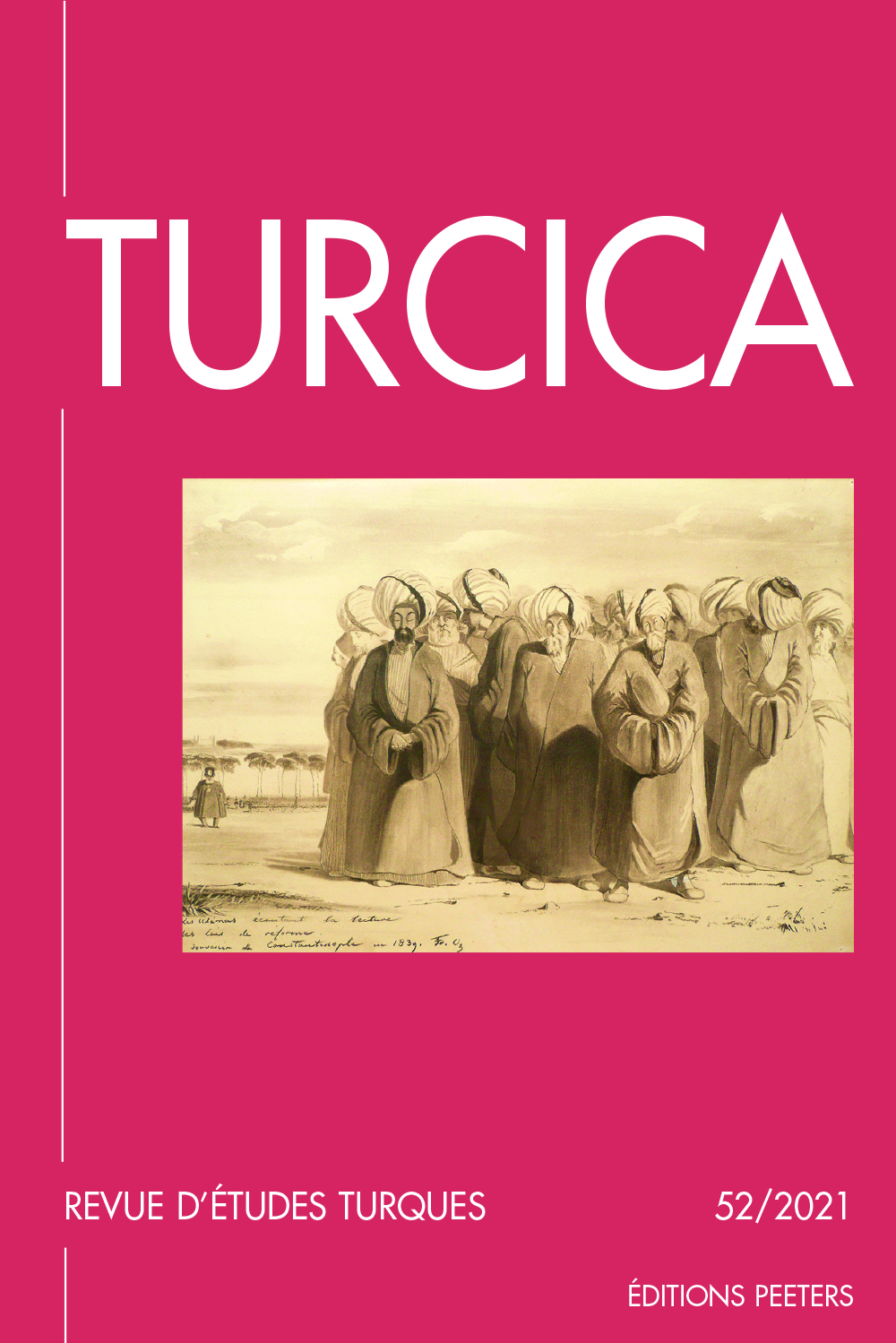 previous article in this issue previous article in this issue | next article in this issue  |

Preview first page |
Document Details : Title: Towards a Social Pre-History of the Ottoman Turkish Language Author(s): HAGEN, Gottfried Journal: Turcica Volume: 54 Date: 2023 Pages: 245-285 DOI: 10.2143/TURC.54.0.3292410 Abstract : The earliest texts written in Turkish in the Middle East have been mostly well known for a long time, but the standard explanations for the phenomenon of the ‘literization’ of Turkish (in Sheldon Pollock’s terminology) have been partial and often unsatisfactory, in particular, the modern nationalist narrative that frames it as a quasi-natural process. Based on recent studies by Peacock and others, this article surveys the evidence to argue that a comprehensive understanding requires several new approaches. The generalization from a relatively small number of data points from a vast geography calls for caution, on the other hand, limiting the discussion to Anatolia misses Turkish literization in Mamluk domains in the same period. In addition to historical arguments I draw attention to the specific conditions in which the boundaries between linguistic domains were being redrawn for the use of Turkish: playful innovation within the framework of poetic and literary competition, dissemination of didactic texts, and the purposeful rejection of learned religiosity all opened up new spaces for Turkish, whose literization thus took a route that distinctly differed from that of South Asian and Western vernaculars. Les plus anciens textes écrits en turc au Proche-Orient sont pour la plupart connus depuis longtemps, mais les explications habituelles du phénomène de «littérarisation» du turc (selon la terminologie de Sheldon Pollock) ont été partielles et souvent insatisfaisantes, en particulier le récit nationaliste moderne qui le présente comme un processus quasi-naturel. En prenant appui sur les études récentes de Peacock et d’autres, cet article examine les indices qui montrent qu’une compréhension globale nécessite plusieurs approches inédites. La généralisation à partir d’un nombre relativement faible de données provenant d’un vaste espace géographique appelle à la prudence; d’autre part, en limitant la discussion à l’Anatolie, on passe à côté de la littérarisation turque dans les domaines mamelouks à la même période. Outre les arguments historiques, j’attire l’attention sur les conditions spécifiques dans lesquelles les frontières entre les domaines linguistiques ont été redessinées pour l’usage du turc: l’innovation ludique dans le cadre de la compétition poétique et littéraire, la diffusion de textes didactiques et le rejet délibéré de la religiosité savante ont ouvert de nouveaux espaces pour le turc, dont la littérarisation a ainsi pris une voie qui diffère nettement de celle suivie par les langues vernaculaires d’Asie du Sud et d’Occident. |
|


